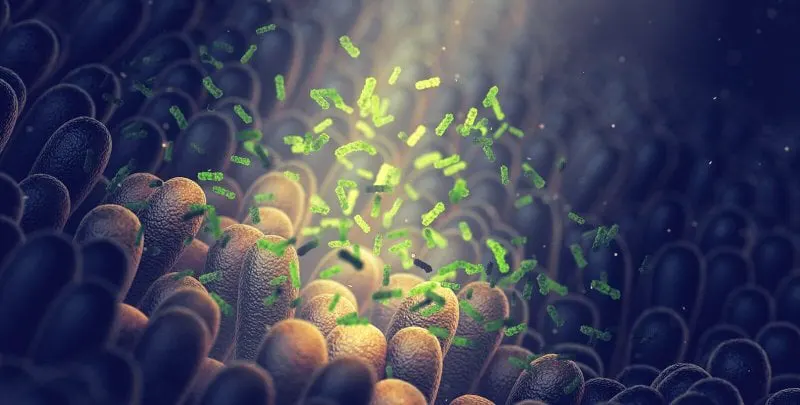GE probiotic? CRISPR-edited yeast produce vitamin A precursor beta-carotene
GE probiotic? CRISPR-edited yeast produce vitamin A precursor beta-carotene


Researchers have genetically engineered a probiotic yeast to produce beta-carotene in the guts of laboratory mice. The advance demonstrates the utility of work the researchers have done to detail how a suite of genetic engineering tools can be used to modify the yeast.
“There are clear advantages to being able to engineer probiotics so that they produce the desired molecules right where they are needed,” says [researcher] Nathan Crook. “You’re not just delivering drugs or nutrients; you are effectively manufacturing the drugs or nutrients on site.”
The study focused on a probiotic yeast called Saccharomyces boulardii. It is considered probiotic because it can survive and thrive in the gut, whereas most other yeast species either can’t tolerate the heat or are broken down by stomach acid. It also can inhibit certain gut infections.
Previous research had shown that it was possible to modify S. boulardii to produce a specific protein in the mouse gut. And there are many well-established tools for genetically engineering baker’s yeast, S. cerevisiae – which is used in a wide variety of biomanufacturing applications. Crook and his collaborators wanted to get a better understanding of which genetic engineering tools would work in S. boulardii.
Specifically, the researchers looked at two tools that are widely used for gene editing with the CRISPR system and dozens of tools that were developed specifically for modifying S. cerevisiae.
“We were a little surprised to learn that most of the S. cerevisiae tools worked really well in S. boulardii,” Crook says. “Honestly, we were relieved because, while they are genetically similar, the differences between the two species are what make S. boulardii so interesting, from a therapeutic perspective.”
Once they had established the viability of the toolkit, researchers chose to demonstrate its functionality modifying S. boulardii to produce beta-carotene. Their rationale was both prosaic and ambitious.
“On the one hand, beta-carotene is orange – so we could tell how well we were doing just by looking at the colonies of yeast on a petri dish: they literally changed color,” Crook says. “On a more ambitious level, we knew that beta-carotene is a major provitamin A carotenoid, which means that it can be converted into vitamin A by the body – and we knew that vitamin A deficiency is a major public health problem in many parts of the world. So why not try to develop something that has the potential to be useful?”
Researchers tested the modified S. boulardii in a mouse model and found that the yeast cells successfully created beta-carotene in the guts of mice.
“This is a proof of concept, so there are a lot of outstanding questions,” Crook says. “How much of this beta-carotene is getting absorbed by the mice? Are these biologically relevant amounts of beta-carotene? Would it work in humans? All of those are questions we’ll have to address in future work. But we’re excited to see what happens. And we’re excited that these tools are now publicly available for use by others in the research community.”
The paper, “In situ biomanufacturing of small molecules in the mammalian gut by probiotic Saccharomyces boulardii,” appears in the journal ACS Synthetic Biology. Co-first authors of the paper are Deniz Durmusoglu and Ibrahim Al’Abri – both Ph.D. students at NC State. The paper was co-authored by Scott Collins, a Ph.D. student at NC State; Junrui Cheng, a postdoctoral researcher at NC State; Abdulkerim Eroglu, an assistant professor of nutrigenomics in the Department of Molecular and Structural Biochemistry and Plants for Human Health Institute at NC State University; and Chase Beisel, a professor at the Helmholtz Institute for RNA-based Infection Research.
Read the original post

 | Videos | More... |

Video: Nuclear energy will destroy us? Global warming is an existential threat? Chemicals are massacring bees? Donate to the Green Industrial Complex!
 | Bees & Pollinators | More... |

GLP podcast: Science journalism is a mess. Here’s how to fix it

Mosquito massacre: Can we safely tackle malaria with a CRISPR gene drive?

Are we facing an ‘Insect Apocalypse’ caused by ‘intensive, industrial’ farming and agricultural chemicals? The media say yes; Science says ‘no’
 | Infographics | More... |

Infographic: Global regulatory and health research agencies on whether glyphosate causes cancer
 | GMO FAQs | More... |

Why is there controversy over GMO foods but not GMO drugs?

How are GMOs labeled around the world?

How does genetic engineering differ from conventional breeding?
 | GLP Profiles | More... |

Alex Jones: Right-wing conspiracy theorist stokes fear of GMOs, pesticides to sell ‘health supplements’




 Trust issues: What happens when therapists use ChatGPT?
Trust issues: What happens when therapists use ChatGPT? Fighting deforestation with CO2: Biotechnology breakthrough creates sustainable palm oil alternative for cosmetics
Fighting deforestation with CO2: Biotechnology breakthrough creates sustainable palm oil alternative for cosmetics Viewpoint: Video — Big Solar is gobbling up productive agricultural land and hurting farmers yet providing little energy or sustainabilty gains
Viewpoint: Video — Big Solar is gobbling up productive agricultural land and hurting farmers yet providing little energy or sustainabilty gains California, Washington, Oregon forge immunization alliance to safeguard vaccine access against federal undermining
California, Washington, Oregon forge immunization alliance to safeguard vaccine access against federal undermining Viewpoint — Fact checking MAHA mythmakers: How wellness influencers and RFK, Jr. undermine American science and health
Viewpoint — Fact checking MAHA mythmakers: How wellness influencers and RFK, Jr. undermine American science and health 30-year-old tomato line shows genetic resistance to devastating virus
30-year-old tomato line shows genetic resistance to devastating virus The free-range chicken dilemma: Better for birds, but with substantial costs
The free-range chicken dilemma: Better for birds, but with substantial costs ‘You have to treat the brain first’: Rethinking chronic pain with Sanjay Gupta
‘You have to treat the brain first’: Rethinking chronic pain with Sanjay Gupta
